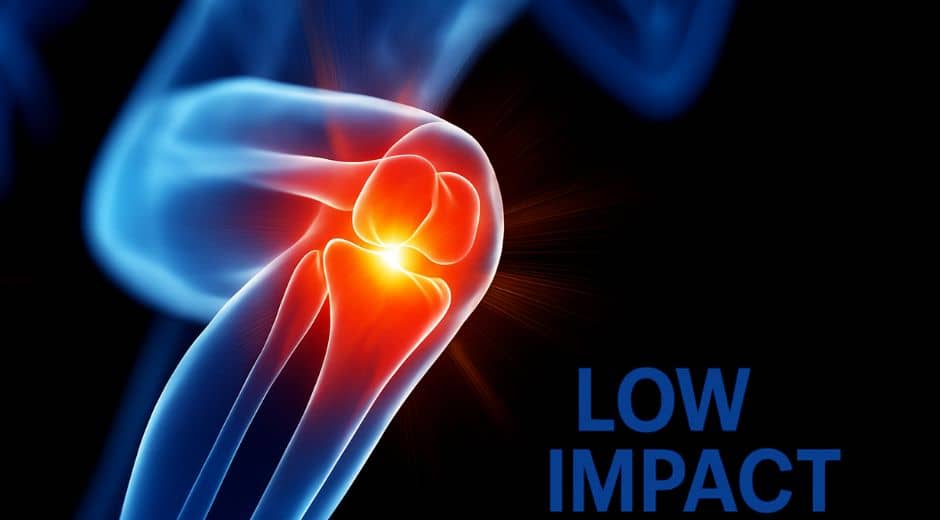Redefining Strength: How the Body Learns to Adapt
Redefining Strength: How the Body Learns to Adapt
Strength is often thought of as a simple concept: the ability to lift, push, or endure physical challenges. But in 2025, science and sports performance have revealed that strength is far more complex — it is adaptive, multidimensional, and deeply tied to how the body responds to challenges, stress, and training over time.
From elite athletes to everyday fitness enthusiasts, understanding how the body learns to adapt is key to developing lasting resilience, power, and health. This article explores the science, methods, and strategies behind strength adaptation, helping readers redefine what it means to be truly strong.
1. Understanding Strength: Beyond Muscles
Traditionally, strength was equated with muscle size or the amount of weight someone could lift. Today, we recognize that strength encompasses several dimensions:
Muscular Strength: The ability of muscles to exert force.
Endurance Strength: Sustained power over extended periods.
Neuromuscular Strength: How effectively your nervous system activates muscles.
Functional Strength: Practical power applied to real-life movements and daily activities.
The body’s ability to adapt is the common thread across these forms. Muscles, tendons, ligaments, and neural pathways all respond to stimuli, growing stronger, more efficient, and more resilient with proper training.
2. The Science of Adaptation
Adaptation is the process through which the body becomes more capable in response to stress. Strength training is essentially a controlled stressor: muscles experience micro-tears during exercise, which repair and strengthen through rest and nutrition.
Key mechanisms of adaptation include:
Hypertrophy: Muscle fibers grow larger through repeated stimulus.
Neural Efficiency: The nervous system recruits muscle fibers more effectively.
Metabolic Adaptation: Energy systems improve to support prolonged or intense effort.
Connective Tissue Strengthening: Tendons and ligaments adapt to handle greater loads.
The principle of adaptation is central to all strength development. Without progressive challenge — whether through weight, resistance, or technique — the body will plateau.
3. Progressive Overload: The Foundation of Strength
One of the most critical concepts in building strength is progressive overload. This principle states that to continue improving, the body must face gradually increasing demands.
Ways to apply progressive overload:
Increase resistance: Add more weight to your lifts.
Increase volume: Perform more sets or reps over time.
Vary tempo: Change the speed of movements to increase time under tension.
Introduce complexity: Incorporate compound or multi-joint exercises.
Progressive overload forces the body to adapt continuously, ensuring gains in muscle, neural efficiency, and overall functional power.
4. Neurological Adaptations: Strength Starts in the Brain
While muscles grow visibly, much of strength development occurs in the nervous system. Early gains in strength are largely due to improved neural efficiency.
Neural adaptations include:
Motor unit recruitment: Activating more fibers within a muscle.
Synchronization: Coordinating muscle fibers to contract simultaneously.
Rate coding: Increasing the speed of nerve impulses for stronger contractions.
This explains why beginners often see rapid strength improvements without significant muscle growth — their brains are learning to fire muscles more effectively.
5. The Role of Recovery in Strength
Adaptation doesn’t happen during exercise — it happens during recovery. Muscles repair, energy systems replenish, and neural pathways consolidate learning. Without sufficient recovery, strength gains stagnate and injury risk rises.
Essential recovery strategies:
Sleep: Deep sleep promotes muscle repair and hormonal balance.
Nutrition: Protein, complex carbohydrates, and healthy fats support recovery and growth.
Active recovery: Light activity improves blood flow and aids tissue repair.
Periodization: Alternating intense and lighter training cycles prevents overtraining.
Understanding the link between stress and recovery is crucial to truly redefining strength.
6. Functional Strength: Strength in Motion
Strength is no longer measured solely by what you lift in a gym; it’s measured by how effectively your body moves and performs in daily life or sports. Functional strength involves balance, stability, mobility, and coordination.
Examples of functional strength:
Lifting a child or heavy object safely.
Hiking across rugged terrain with endurance.
Pushing, pulling, or twisting in dynamic sports scenarios.
Maintaining posture and stability under fatigue.
In 2025, fitness programs increasingly prioritize functional strength to ensure muscles, joints, and the nervous system work in harmony.
7. Strength and Longevity
Strength training isn’t just about appearance or athletic performance — it’s critical for long-term health. Scientific studies show that maintaining muscle mass and bone density reduces the risk of falls, osteoporosis, and chronic disease.
Benefits of strength adaptation for longevity:
Improved metabolism and weight management.
Enhanced cardiovascular health through compound movements.
Better insulin sensitivity and glucose control.
Mental health benefits, including reduced anxiety and depression.
By learning to adapt through strength-focused training, individuals enhance both lifespan and quality of life.
8. Incorporating Variety for Maximum Adaptation
The body adapts efficiently to repeated stimuli, which is why varied training is essential. Mixing modalities, angles, and tempos prevents plateaus and fosters holistic strength.
Strategies for variety:
Alternate between free weights, machines, and resistance bands.
Mix compound exercises (squats, deadlifts) with isolation exercises (bicep curls).
Incorporate unilateral movements to address imbalances.
Include explosive power training, like plyometrics, to develop fast-twitch fibers.
Variety ensures continued adaptation across multiple systems, enhancing overall strength.
9. The Mental Side of Strength
Strength is not purely physical — it is also mental. Mental toughness, focus, and resilience are critical components of the Quiet Skill of Strength.
Mental strategies to enhance adaptation:
Visualization: Mentally rehearsing lifts or movements primes the nervous system.
Mindfulness: Staying present during training improves technique and reduces injury.
Goal setting: Small, achievable milestones maintain motivation and progression.
Stress management: Cortisol regulation supports recovery and performance.
The mind and body work together; cultivating mental strength accelerates physical adaptation.
10. Nutrition and Strength Adaptation
Nutrition fuels adaptation. Muscles, bones, and neural pathways need the right building blocks to grow stronger.
Key nutritional principles:
Protein intake: Supports muscle repair and hypertrophy.
Complex carbohydrates: Provide sustained energy for intense training.
Healthy fats: Aid hormone production, including testosterone and growth factors.
Micronutrients: Calcium, magnesium, and vitamin D support bone and muscle health.
Hydration: Optimal water intake ensures efficient cellular function.
Pairing structured nutrition with smart training maximizes the body’s ability to learn, adapt, and grow stronger.
11. Technology and Strength Training
Modern technology has revolutionized how strength is measured and enhanced. From wearable sensors to AI-driven training apps, the strength industry is embracing digital transformation.
Examples of tech-driven strength adaptation:
Smart wearables tracking movement efficiency, heart rate, and recovery.
AI-powered workout plans adjusting load and volume in real time.
Motion analysis software improving lifting technique.
Virtual coaching platforms providing guidance and accountability.
These tools make the process of building and adapting strength more precise, efficient, and personalized.
12. Common Myths About Strength
Despite growing knowledge, misconceptions about strength persist.
Myths Debunked:
“Strength is only for young people” — Older adults can build significant strength through proper training.
“More weight = more strength” — Technique, consistency, and adaptation matter more than raw load.
“Cardio reduces strength” — Cardiovascular fitness complements functional strength if balanced correctly.
“Muscle size equals strength” — Neurological efficiency and coordination are equally important.
Understanding the science behind adaptation helps people avoid these pitfalls and train smarter.
15. Conclusion: Strength as Adaptation
In 2025, strength is no longer just about muscles or lifting capacity. It’s about adaptation — how the body, mind, and nervous system respond to stress and recover stronger.
By embracing progressive training, functional movement, mental focus, proper nutrition, and recovery strategies, anyone can cultivate enduring strength. It’s a skill that grows quietly, steadily, and profoundly, transforming not just the body but the quality of life.
The strongest people aren’t always the loudest or the fastest;
Wellness Made Simple

Breathwork Basics You Can Use Anytime To Reset
Breathwork Basics You Can Use Anytime To Reset

Sleep Rhythm, Simple Night Habits For Deeper Rest
Sleep Rhythm, Simple Night Habits For Deeper Rest

The Meaning of Connection: Building a Purposeful and Fulfilling Lifestyle
Explore how genuine connection supports mental wellbeing, emotional health, and deeper purpose, shaping a more meaningful and fulfilling lifestyle.

Hydration Balance: How Water Shapes Energy, Digestion, and Daily Wellness
Learn how hydration balance fuels energy, supports digestion, and improves overall wellbeing through simple daily habits and smart nutrition strategies.

The Power of Grounding: Returning to Inner Stability in a Distracted World
Discover how grounding techniques calm the mind, reduce stress, and restore emotional stability in a fast paced, distraction filled world.

Mastering Mobility: The Overlooked Pillar of Long-Term Fitness Health
Discover why mobility is essential for strength, performance, and injury prevention, and learn how daily movement habits build a healthier, more resilient body.

The Meaning of Connection: Building a Purposeful and Fulfilling Lifestyle
Explore how genuine connection supports mental wellbeing, emotional health, and deeper purpose, shaping a more meaningful and fulfilling lifestyle.

The Power of Antioxidants: Defending Your Body from Within
Learn how antioxidants protect your cells, strengthen immunity, and support long-lasting vitality through simple, nutritious food choices.

Expanding Awareness: The Key to Emotional and Mental Freedom
Discover how cultivating awareness deepens emotional balance, clarity, and self-understanding, helping you live consciously every day.













